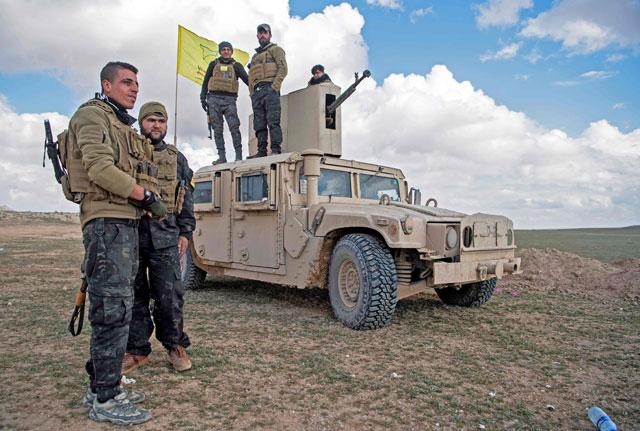You are here
Daesh territory shrinks 12 per cent since start of 2016 — IHS
By AFP - Jul 10,2016 - Last updated at Jul 10,2016
BEIRUT — The Daesh terror group lost 12 per cent of the territory it holds in Iraq and Syria in the first half of 2016, according to an analysis by research group IHS.
The analysis published on Sunday says the extremist group, which proclaimed its self-styled "caliphate" in the two countries in 2014, is continuing to lose ground after a string of setbacks last year.
"In 2015, the Islamic State's [Daesh’s] caliphate shrunk by 12,800 square kilometres to 78,000 square kilometres, a net loss of 14 per cent," IHS said.
"In the first six months of 2016, that territory shrunk again by 12 per cent. As of July 4, 2016, Daesh controls roughly 68,300 square kilometres in Iraq and Syria."
In Syria, Daesh is under pressure from regime troops backed by Russian forces, an Arab-Kurdish alliance backed by a US-led coalition, and rebel forces.
In Iraq, coalition-backed security forces, working with pro-government militia groups, have dealt the extremists a series of defeats.
Daesh forces are currently under siege in the Syrian town of Manbij, which lies on their main supply route between Syria and Turkey.
In March the extremists were routed from the ancient Syrian city of Palmyra and in June from the Iraqi city of Fallujah.
In 2015, the group lost Tal Abyad, a key border post on the Syrian-Turkish border, as well as the Iraqi city of Ramadi.
In May, the Pentagon said that Daesh had lost some 45 per cent of the territory it held in Iraq and between 16 and 20 per cent of its territory in Syria.
The IHS report did not include percentages by country.
IHS senior analyst Columb Strack said the losses were likely to mean Daesh would redouble its attempts at "mass casualty attacks".
"As the Daesh's caliphate shrinks and it becomes increasingly clear that its governance project is failing, the group is reprioritising insurgency," he said.
"We unfortunately expect an increase in mass casualty attacks and sabotage of economic infrastructure, across Iraq and Syria, and further afield, including Europe."
Daesh has also seen its revenues drop, from around $80 million a month in mid-2015 to $56 million a month by March 2016, according to IHS.
"This figure has probably continued to decrease since March by at least another 35 per cent," said Ludovico Carlino, another senior analyst at IHS.
"Combined with the military setbacks on the ground, this is having an impact on the internal cohesion of the group as indicated by a marked increase in defections and desertions since January," he added.
Facing territorial losses and pressure, Daesh on Wednesday issued a video describing the "organisation of the caliphate" in which it claimed control of 35 "wilayat" or provinces, including 19 in Syria and Iraq.
Related Articles
NEAR BAGHOUZ, Syria — Syrian fighters backed by artillery fire from a US-led coalition battled a fierce terrorist counteroffensive as they p
BAGHDAD — After months of losing ground in Iraq and Syria, the Daesh terror group is showing signs of wear and tear, and its opponents say t
CAIRO — The Daesh terror group released an audio recording of its leader Abu Bakr Al Baghdadi on Thursday, the first communication from the
















